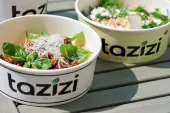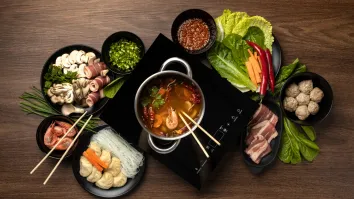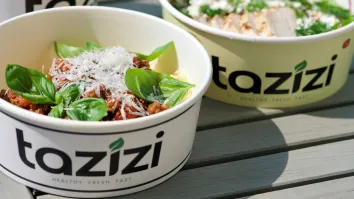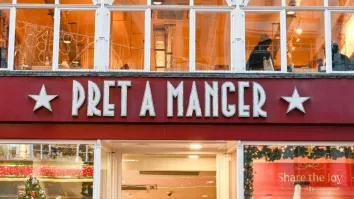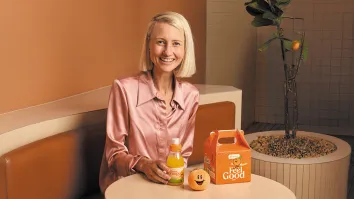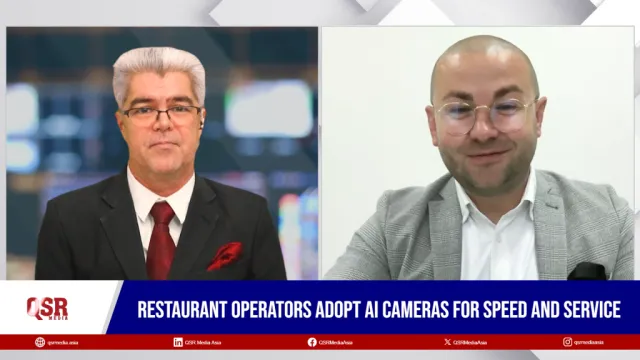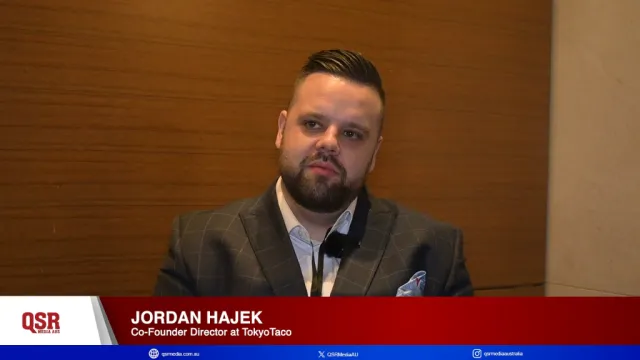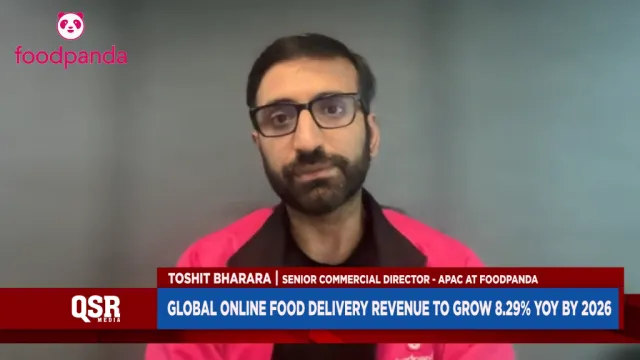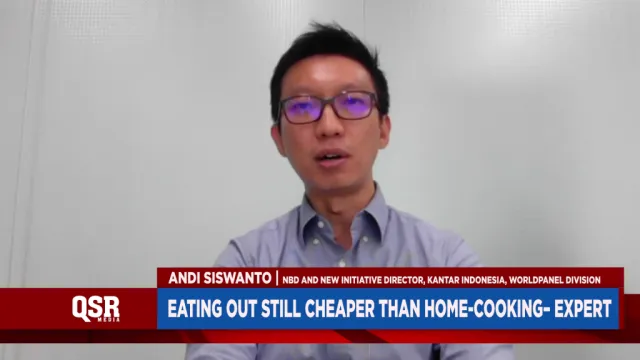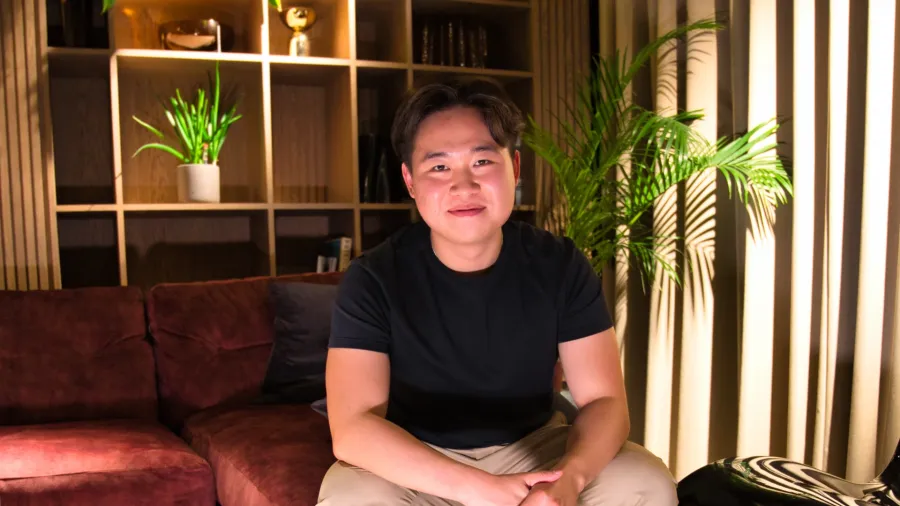
How the restaurant of the future will be built
Automating repetitive processes in the kitchen is the first step according to KAIKAKU’s CEO.
There has been no breakthrough game-changer in the quick-restaurant industry. That’s what KAIKAKU CEO and co-founder Josef Chen has observed since he was six years old growing up in the kitchens of their family-owned Chinese restaurant.
KAIKAKU, derived from the Japanese term for radical change, was founded in April 2023 by Josef and a few others who share his expertise in both F&B and technology.
READ MORE: Why hospitality leaders are turning to technology to retain staff
The core philosophy of KAIKAKU centres around augmenting human capabilities by automating the repetitive chores and manual tasks native to the restaurant sector, which has long been riddled with chronic staff shortages and low job satisfaction.
Since the age of six, Josef has been working in his family’s restaurant, doing jobs like cutting up potatoes or serving drinks.
“I’ve always had this thought in my head: ‘Why hasn’t the industry changed?’ The restaurant that my parents run hasn’t changed for the past two decades. I believe the same applies to all the other QSRs and restaurants,” Josef told QSR Media in a recent interview.
He would argue that the only revolutionary change was by McDonald’s eighty years ago when it first launched its business model. And Josef was ready to bring about the next restaurant revolution of the future today.
Revolutionising the restaurant industry
Josef has a very ambitious goal which is to fully integrate and revolutionise the restaurant industry. For which he has teamed up with a former Ocado Technology Executive Dr David Sharp and UK’s youngest McDonald’s manager and LSE-dropout Piers Millar.
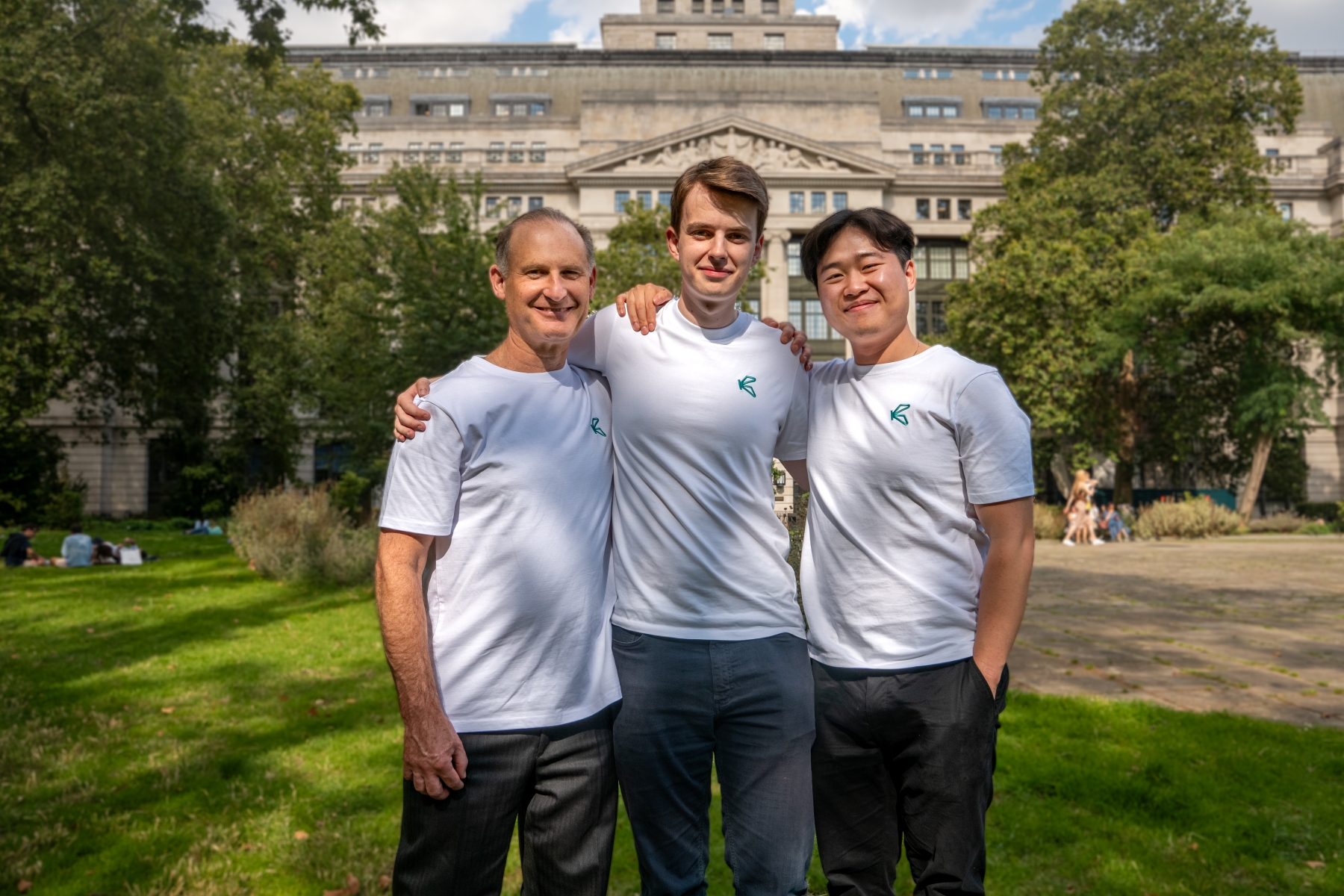
And he doesn’t plan on creating just one piece of software or automating a tiny part of the business.
“We strongly believe that the only way to fully revolutionise the industry is to build everything from front to back. This means going and changing everything from ordering to making the food to serving it to the customer,” Josef explained.
A big step towards this goal is to be able to automate procedures in the back of the house. For example, Josef estimates that 80% of all processes done in the kitchen are repetitive.
“Slicing vegetables and prepping vegetables ten hours a day, or even just putting burger buns in the bun machine, all of these actions are very robotic and repetitive. Staff in restaurants don’t and shouldn’t have to make decisions in the kitchen because it will slow down the process and deliver inconsistent food” Josef said.
He argues that automating all of those should not require a £50,000 (US$61,000) robot arm to slice the tomatoes when a cheaper slicing module is available. In fact, some residential kitchens have more technology than the kitchens in QSRs.
MORE LIKE THIS: Creams Cafe new 'shop-in-shop' concept to boost its reach in the UK
For example, in some homes, they have gadgets that will help slice an apple or dice onions.
“You’d be surprised by how little of these things exist in kitchens in QSR restaurants because they have not changed their processes and technology from decades ago,” Josef said.
Meanwhile, one of the biggest things cutting through a restaurant’s earnings which KAIKAKU wants to solve is food waste by ensuring that QSR restaurants don’t overproduce or throw away food due to human error.
The restaurant of the future
To be clear, Josef said the aim of using more technology is not to eliminate the need for human staff but to steer them away from the kitchen towards the front of the restaurant.
“We believe that hospitality should be underlined. Instead of relegating staff in the back to do repetitive tasks that can be achieved by robotics, why don’t we free them up to help add a personal touch to the dish or take care of customers in the front of house?” he pointed out.
Building the restaurant of the future will take time because, according to Josef, most chains like McDonald’s or Burger King are relying on the “butterfly effect” — the notion that a slight change causes greater overall effects — as these chains lean heavily on their franchisees’ demands.
“It takes a lot of time to get franchisees on board with new technologies. For example, it took McDonald’s a very long time to roll out the kiosk ordering system because it’s not easy telling franchisees that they need to invest another £100k and roll out a unproven kiosk system,” said Josef.
For these big players, they need to be able to prove to franchisees that it works before they can slowly roll it out.
One QSR chain Josef believes is going in the right direction is the American fast-casual chain, Sweetgreen. Since the chain operates most of its stores, it has the flexibility to try new technology.
In 2021, Sweetgreen bought kitchen robotic startup Spyce with the intention of going all-in on automation. At the time, Spyce used its proprietary technology to make and serve healthy meals at an affordable price. It had two restaurants before Sweetgreen purchased it for US$50m (£41m).
In May, Sweetgreen opened its first automated location, an attempt to have a robotic kitchen work in tandem with restaurant staff.
“A lot of players are going in this direction. If Sweetgreen is able to demonstrate that their technology works and is worth the money, then it would be a wake-up call for the industry and spread confidence in adapting end-to-end automation,” said Josef.
KAIKAKU’s role
Chen’s company believes that technology should help create jobs that people enjoy. Instead of hiring 10 unhappy staff members to do menial tasks, they should hire one or three people to help solve problems, create more personalised menus, or just be there to explain the new concept.
For the back end, staff can help with ensuring quality control of the meals being prepared.
“We are all about education and training. It’s similar to how we transitioned from coal trains to electric trains. Instead of having people shovelling coal in the train, we now teach them to maintain the train itself and troubleshoot the technology,” he explained.
The restaurant of the future he envisions is a picture of consumers getting their orders promptly and efficiently, with staff members all in front, greeting customers or assisting them to have a more enjoyable experience. At the back, robotics and AI handle all the cutting and measuring of each individual meal, tailoring them to what’s currently in season or based on a customer’s dietary requirements.
At present, KAIKAKU is working on a feature like Tinder, where customers will be shown several pictures of food which they can swipe right, indicating that they like it and after a few times, the AI will be able to learn exactly what ingredients and food combinations a customer would want and create suggestions for their orders.
“At the end of the day, what we want to achieve is to create Michelin-quality foods in QSR that are scalable and give customers a delightful experience every time they visit,” Josef said.
